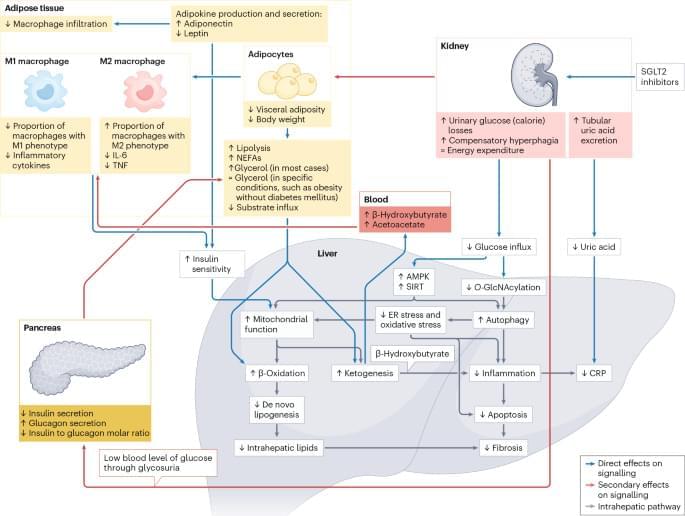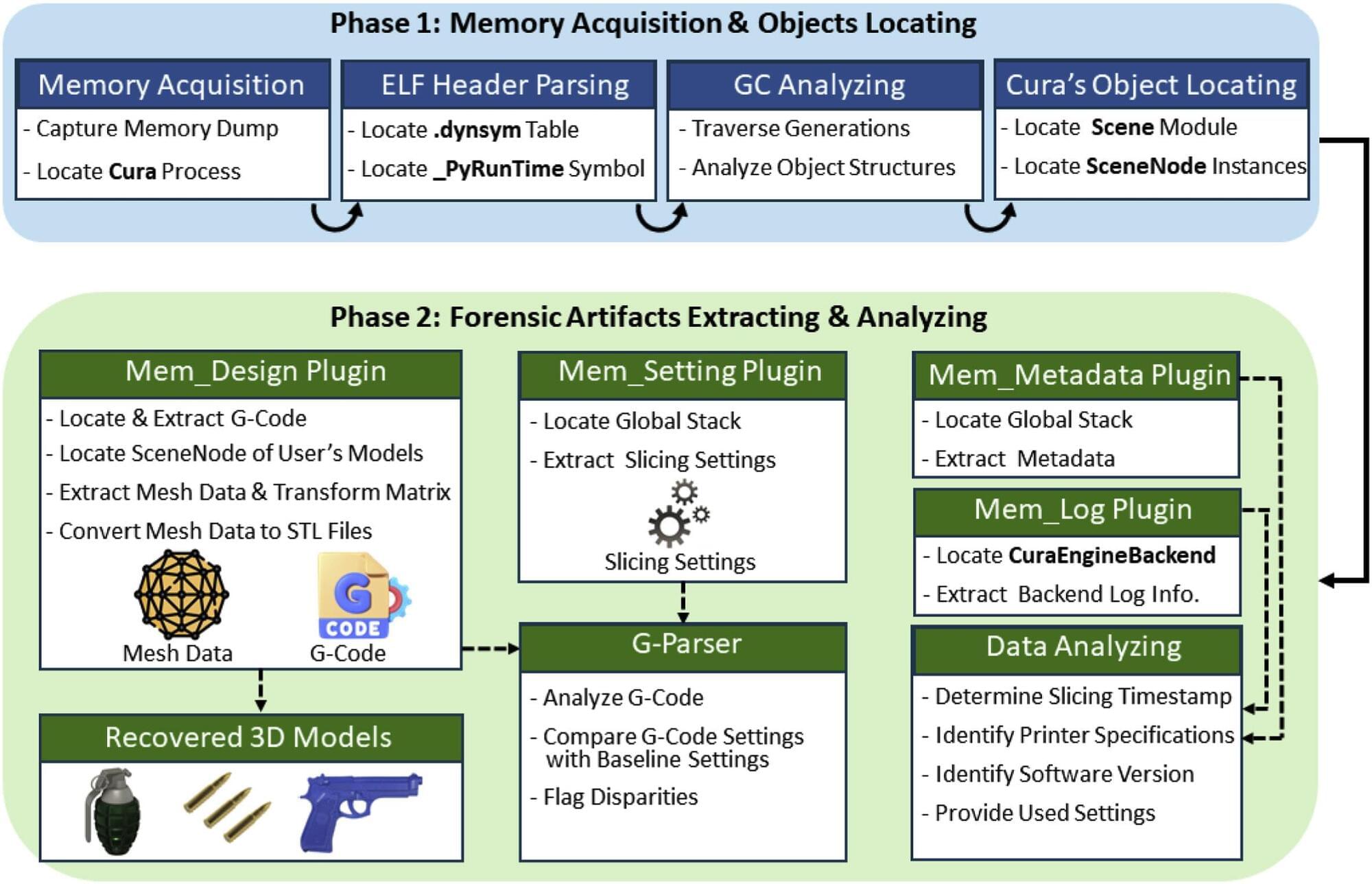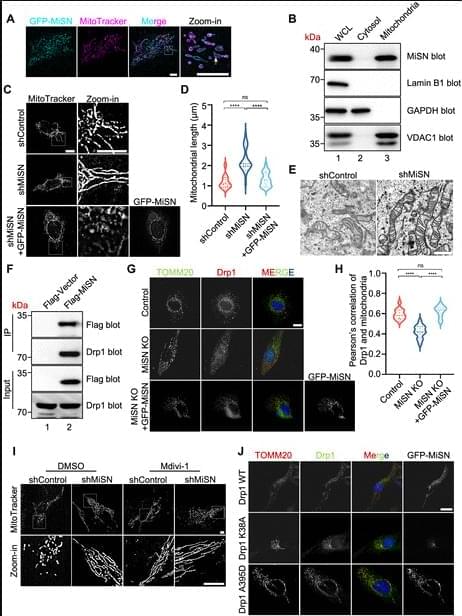A new study reveals that the brain uses two distinct neural pathways to regulate sugar and fat intake.



In the past decade, the therapeutic scope of sodium–glucose cotransporter 2 (SGLT2) inhibitors has expanded beyond glycaemic regulation in the management of type 2 diabetes mellitus. In this Review, Lim et al. discuss data from clinical studies of SGLT2 inhibitors, demonstrating their multifaceted cardiovascular, metabolic and renal effects, and elucidate the diverse mechanisms underpinning these benefits.

An international research team, led by Shinghua Ding at the University of Missouri, has identified a previously unknown genetic disease that affects movement and muscle control.
The disease—called Mutation in NAMPT Axonopathy (MINA) syndrome—causes damage to motor neurons, the nerve cells that send signals from the brain and spinal cord to muscles. It’s the result of a rare genetic mutation in a critical protein known as NAMPT, which helps the body’s cells make and use energy. When this protein doesn’t work as it should, cells can’t produce enough energy to stay healthy.
Over time, this lack of energy causes the cells to weaken and die, and leads to symptoms such as muscle weakness, loss of coordination and foot deformities—which can worsen over time. In severe cases, patients may eventually need a wheelchair.

To most people, a 3D printer is a cool piece of technology that can make toys, tools or parts in minutes. But for Hala Ali, it can be a partner in crime, and the doctoral student at Virginia Commonwealth University earned national honors recently for her work exploring one of the fastest-growing frontiers in cybercrime.
Ali, a computer science student in the College of Engineering, won best paper at this summer’s 25th annual Digital Forensics Research Conference in Chicago. The paper, “Leveraging Memory Forensics to Investigate and Detect Illegal 3D Printing Activities,” reflects her research into how digital forensics can help investigators uncover whether a 3D printer was used to create weapons or other illegal objects.
“3D printing is a process of creating a physical object from a digital design by laying down successive layers of material until the object is created,” Ali said.

Small cell lung cancer often metastasizes to the brain. A Stanford Medicine-led study shows the cancer cells form synapses with neurons, and signaling across these synapses encourages tumor growth.


A research team including a Keele University scientist have made a breakthrough in monitoring insect populations across the UK using weather radar data. Traditionally used to track rainfall and storms, these radars are now helping researchers monitor the daily movements and long-term numbers of flying and floating creatures—including bees, moths, flies, spiders, and other arthropods.

Researchers at La Jolla Institute for Immunology, Scripps Research, and the Ragon Institute of MGH, MIT, and Harvard report coordinated studies showing that several HIV germline-targeting immunogens can be delivered together to activate multiple broadly neutralizing antibody precursors.
HIV vaccine design faces the challenge that B cells capable of maturing into broadly neutralizing antibodies (bnAb) are exceptionally rare and poorly stimulated by standard antigens. Most immune responses concentrate on variable parts of the viral envelope rather than the conserved regions that would enable cross-strain protection from HIV.
Germline-targeting immunogens have been developed to engage those rare naive B cells directly, but until now, each construct was tested in isolation, leaving open whether several could be given at once without interference. In paired studies published in Science Immunology, investigators tested that question across two models using different vaccine formats.

Mitochondria, the primary energy-producing organelles in eukaryotic cells, power essential biosynthetic processes through oxidative phosphorylation [1]. These organelles are highly dynamic and continually undergo cycles of fusion and fission to support energy-demanding cellular activities such as proton pumping for gastric acid secretion [2]. These membrane remodeling events are regulated by evolutionarily conserved guanosine triphosphatases (GTPases) from the dynamin superfamily, with fusion at the outer and inner membranes mediated by MFN1/2 and OPA1, respectively, and fission occurring by Drp1 [3]. However, little is known about how Drp1 anchors to the mitochondrial outer membrane. Here, we report a previously uncharacterized protein, C3orf33, as a novel adaptor for Drp1 and designate it Mitofissin (MiSN) on the basis of its function in controlling mitochondrial fission. Our preliminary screen suggested that MiSN localizes to mitochondria. To visualize dynamic and fine MiSN localization, we transiently transfected U2OS cells to express green fluorescent protein (GFP)-MiSN, followed by real-time imaging using lattice structured illumination microscopy (Lattice SIM). As shown in Figure 1 A, MiSN colocalized with the mitochondrial dye MitoTracker. Careful examination of the zoomed-in image revealed that the MiSN signal was exterior to the MitoTracker (Figure 1 A, arrow). Further characterization of the cellular fractions revealed that MiSN was enriched in the mitochondrial fraction (Figure 1 B). Thus, we concluded that MiSN is a novel mitochondrial outer membrane protein.
OPEN IN VIEWER
